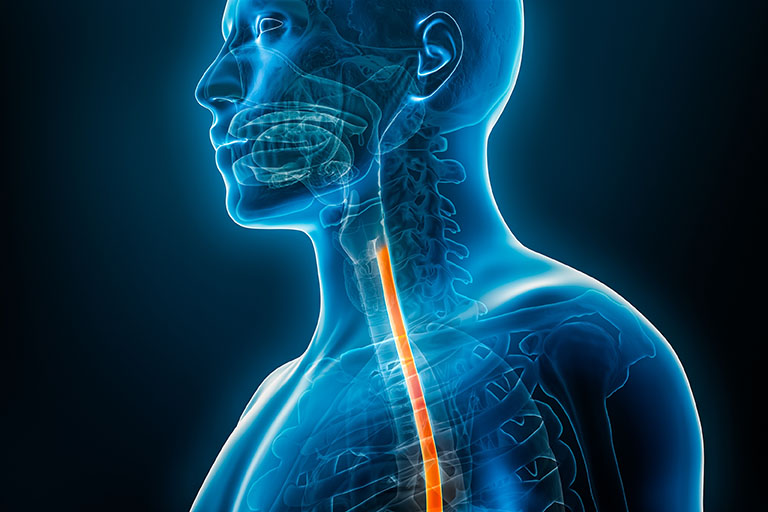

The oesophagus (also called the esophagus) is a long, muscular tube that carries food from the mouth to the stomach. It is about 10 inches long in adults.
The oesophagus starts at the back of the throat and goes down to the stomach. It is lined with muscle that contracts to move food down the tube. The oesophagus also has a sphincter muscle at the bottom that opens to let food into the stomach.
When we swallow, food is pushed down the oesophagus by the contraction of the muscles. The sphincter muscle at the bottom of the oesophagus relaxes to let food into the stomach.
If the oesophagus is not working properly, food can get stuck. This can cause a condition called dysphagia, which is difficulty swallowing. Dysphagia can be caused by a number of things, including a narrowing of the oesophagus, a tumour in the oesophagus, or a neurological disorder.
The oesophagus is about 25 centimetres long in adults.

The word "oesophagus" (British English) or "esophagus" (American English) has no different forms. It is a noun that refers to the muscular tube that carries food from the throat to the stomach.
The word "oesophagus" (British English) or "esophagus" (American English) has no different forms. It is a noun that refers to the muscular tube that carries food from the throat to the stomach.
Where can you find your oesophagus?